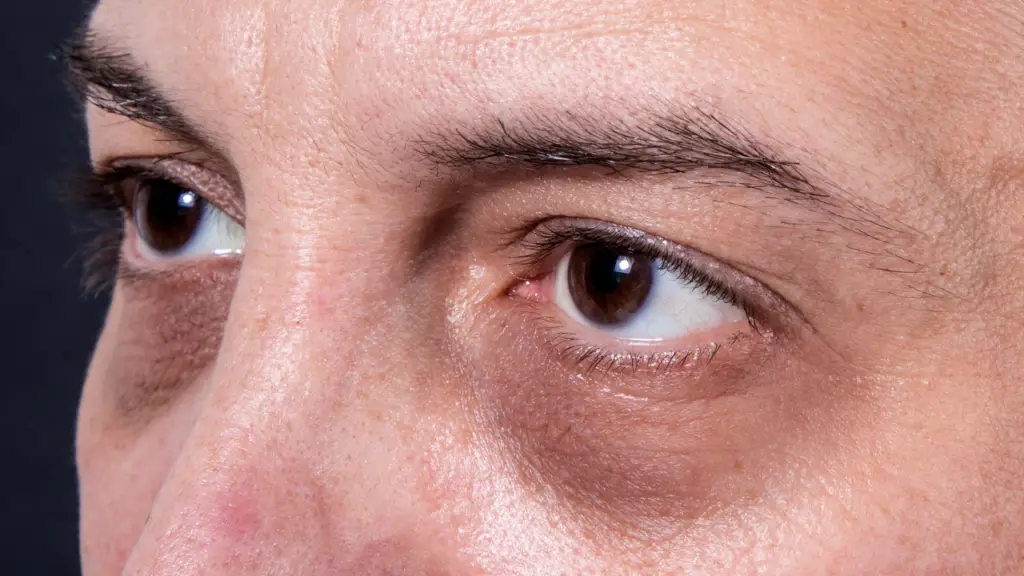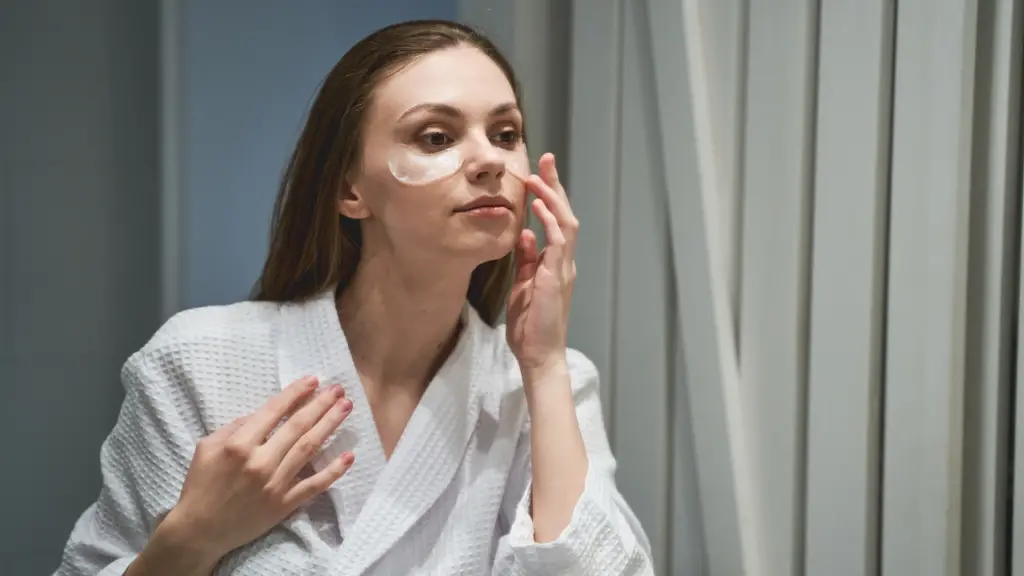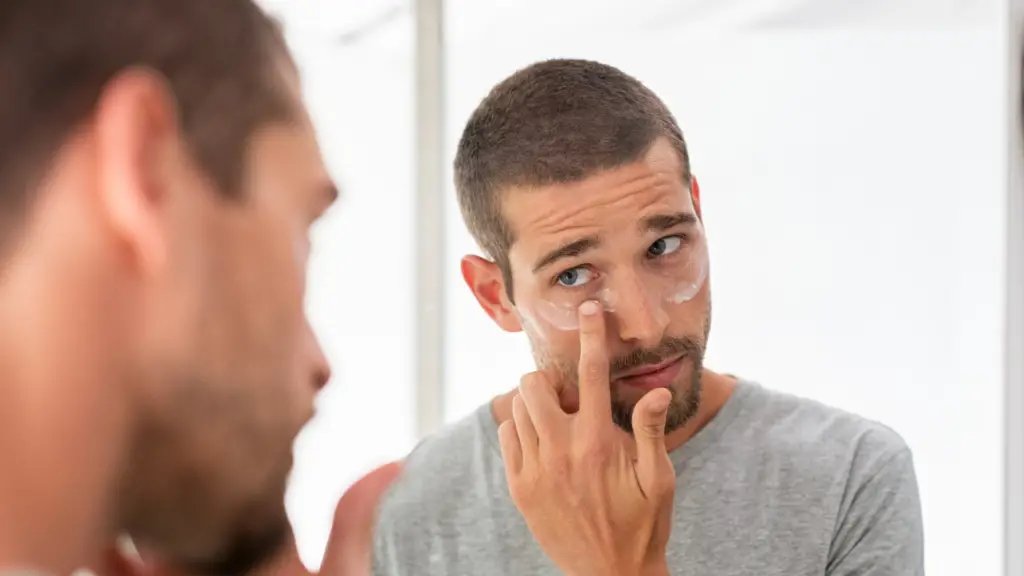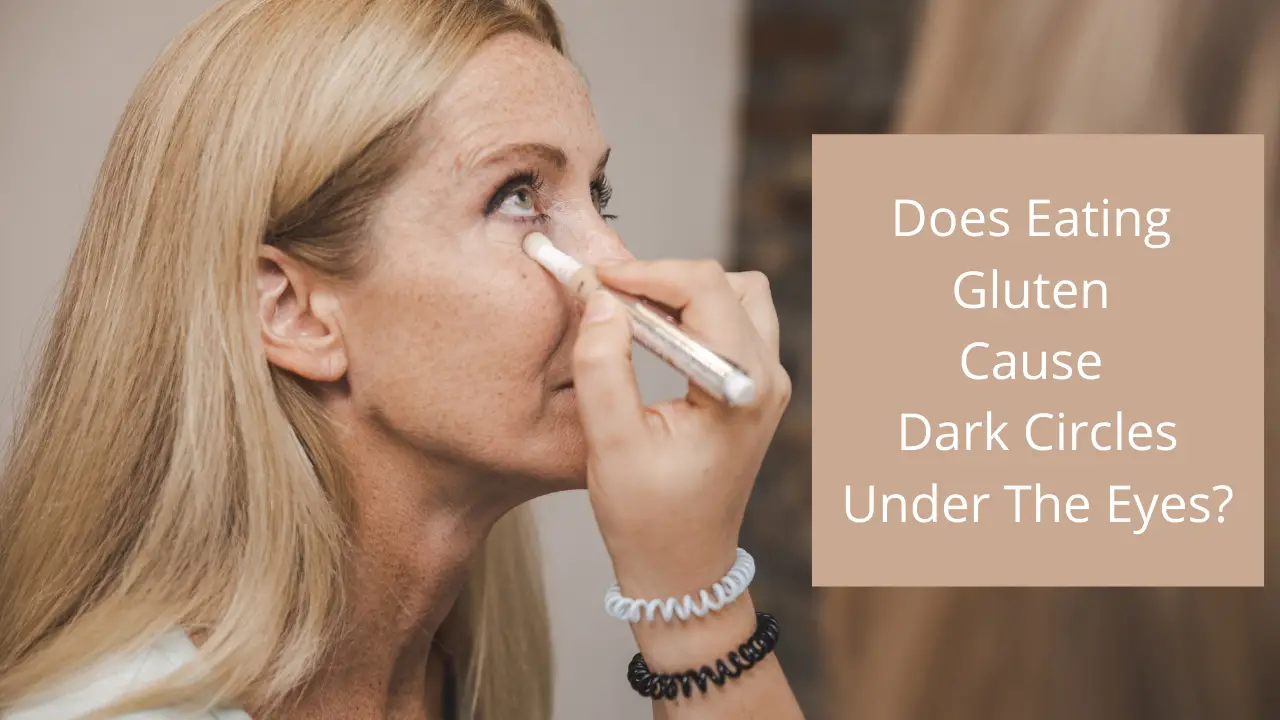As soon as you see these dark hollowed-out lines under your eyes, you'd most likely want to stock up on dozens of skincare products promising to fade them away. But what if the cause goes beyond neglected skincare? What if it is caused internally?
Maybe you don't have to spend hundreds of dollars on expensive skincare brands when the reason is very different. As a gluten-intolerant individual, gluten may be the primary reason your skin is suffering from dark circles. Want to learn more about how that's possible? Keep reading.
What Are Dark Circles?

“Dark circles under the eyes” is pretty self-explanatory. Experts term this condition as periorbital or periocular hyperpigmentation. It can be very disheartening to look in the mirror and see these dark blotches under your eyes after you pull an all-nighter, but what's even worse is when they don't go away after you've had your rest. They can trigger your insecurities, and before you know it, you'll be looking for solutions to get rid of them.
Defining Gluten and Celiac Disease
Like many proteins that we acquire from our diet, gluten is also a family of proteins found mainly in wheat, rye, and barley. When this gluten combines with water, it develops a sticky glue-like consistency from which its name, “gluten,” is derived.
It is this physical nature that gives these foods a chewy texture and allows the dough to rise. While proteins have numerous benefits, gluten can have harmful effects on gluten intolerant individuals. The condition in which the body can not tolerate gluten is called gluten sensitivity or celiac disease.

Celiac disease isn't a food allergy; it's an autoimmune disorder. What happens is that the defense mechanism of the body wrongly misinterprets gluten as a foreign invader. The antibodies will start attacking gluten to eliminate it.
However, in the process, they destroy the intestinal tract's lining. The fundamental function of the small intestine is to absorb the nutrients from the diet for daily utilization.
Due to this reason, people who have an undiagnosed untreated celiac disease not only show some common gastrointestinal symptoms such as bloating, constipation, and abdominal pain but also from deficiency diseases due to malabsorption.
Gluten and Dark Circles- The Relation
Anyone suffering from gluten sensitivity and celiac disease show various gastrointestinal symptoms, but the damage caused by gluten can be much more than that. Medical experts have observed numerous conditions in some people like neurological disorders, reproductive problems, osteoporosis, heart issues, and various other symptoms.
Dermatitis Herpetiformis, a characteristic skin rash, is also a common reaction of the body to gluten. Recent studies have proved that eating gluten can cause dark circles under the eyes.
In most cases, these dark circles appear because of the blood vessels beneath the skin. Our skin around the eyes is thin, which makes the blood vessels quite visible. Usually, the arteries, carrying oxygen-rich blood, lie deeper inside the skin than the veins, which carry oxygen-deficient blood.

This deoxygenated blood has a relatively bluish color, which gives the skin a bluish tint as well. This condition becomes more pronounced in iron deficiency anemia. Iron deficiency anemia is an example of deficiency diseases triggered by malabsorption. This anemia type features red blood cells of smaller size with a decreased quantity of hemoglobin.
Therefore, the oxygen-carrying capacity of the blood decreases and blood vessels start to transport deoxygenated blood. The result is prominently visible under the eyes. And here comes the relation between dark circles and gluten intake. Almost half the periocular hyperpigmentation and dark circles cases resulted from iron deficiency anemia.
People continue to share their experience of visiting a face reader who diagnosed their gluten sensitivity due to the dark circles. Malabsorption and consequent deficiencies of vitamins B12, E, K, and D in people celiac individuals also pave the path for dark circles.
Does Going Gluten-Free Help Dark Circles Under The Eyes?
The best way to get rid of a problem is to eliminate its source. If you've been a patient of undiagnosed and untreated celiac disease for a long time, go gluten-free for some while so that your small intestine can heal. Once it heals completely, and this takes an average of 3-6 months, your intestine will start to absorb iron in an adequate amount once again, relieving you of the symptoms of anemia.
Production of normal red blood cells containing an increased concentration of hemoglobin will ensure proper oxygenation of blood. The regular blood circulation around the eyes helps reduce the bluish tint given to the skin by deoxygenated blood. Studies show reduced dark circle appearance and celiac symptoms with a gluten-free diet in both adults and children.

A gluten-free lifestyle has proved to reduce the chances of vitamin B12, D, E, and K deficiency. The deficiency of these vitamins leads to periocular hyperpigmentation. Applying vitamin E oil combined and increased dietary intake has also proved to be an effective treatment.
One tip is before you go to bed, gently massage your eye with a single drop of vitamin E oil. Let it work its wonders overnight, and in the morning, wash it away with warm water.
List of Gluten-Free, Iron-Rich Foods

Keeping the possibility of anemia at bay means incorporating iron-rich food into your diet to reduce the risks of iron deficiency. Here are a few gluten-free foods that are rich in iron and can help fulfill the daily requirement:
| Ingredients- Per Cup | Iron |
| Soybeans | 8 mg |
| Lentils (boiled) | 6.6 mg |
| Flax Seeds | 9.6 mg |
| Almonds | 6.15 mg |
| Spinach (Raw) | 0.86 mg |
| Kale (Raw) | 1 mg |
| Oyster Mushrooms | 1.33 mg |
| Olives | 5.9 mg |
| Amaranth (Cooked) | 5.2 mg |
Other Causes of Dark Circles
There are numerous reasons for developing dark circles under your eyes other than eating gluten too. Identify these causes in your daily routine if going gluten-free hasn't helped your case.
Genetics and Melanin:
You can naturally have dark skin under your eyes due to genetic causes. The pigment called melanin is responsible for determining skin color, and the amount of melanin produced is controlled primarily by genes. A child may inherit a disposition to dark circles if the parents also had the same condition.

African and Indian nationals have more melanin in their skin genetically, which makes their periocular area darker than other people. Another cause of excessive production of melanin is sun overexposure. Staying too long in direct sunlight can cause hyperpigmentation under your eyes.
Sleep deprivation:
Your 8-hour sleep mandate is necessary for normal body functioning, including maintaining healthy skin, including the layers under your eyes. Pulling all-nighters to study for an exam, binge-watching a show, or staying up late to work can be the culprit behind the formation of dark circles in the periocular area.

Sleep deprivation leads to excessive dilation of the vessels surrounding your eye, giving the skin the characteristic bluish tint of dark circles. Sleeplessness can also be a reason for fluid accumulation underneath the eyes, resulting in a puffy appearance. The dark circles that thus develop are a shadow of your swollen eyelids.
Age:
Unfortunately, older people have a higher risk of developing dark circles than do younger people. As you age, your already thin layered skin around the eyes becomes even more delicate. The amount of stored fat and collagen decreases, and the skin becomes less elastic.

This way, the underlying blood vessels are exposed, especially the poorly oxygenated veins. These veins with decreased oxygen amount cause the skin in the periorbital area to darken.
Skincare As a Solution
Several skincare routines can keep dark circles under the eyes at bay. You might've seen movie characters put slices of cucumber on their eyes, but have you ever wondered why? Cucumber has remarkable astringent and skin-lightening properties. You can even mix cucumber juice and lemon juice, wet a cotton ball with the mixture, and apply to the dark patches for 15 minutes.
Vitamin A has remarkable benefits for normal vision. In terms of skincare, Vitamin A, vitamin C, and glycerin can improve the color of the skin around the eyes. Cold tea bags are an effective method to remove dark circles because of their antioxidant property. For instance, green tea has a strengthening effect on capillary walls.

Massaging and lubricating the eye routinely helps stimulate circulation and prevents fluid from accumulating. There are numerous eye creams in the cosmetic section of big stores you can grab on your next visit. And remember, treat your skin well instead of hiding your dark circles with makeup layers that further damage it.
Final Thoughts
Gluten intolerance isn't restricted to digestive symptoms only but also causes many problems in various body parts. Since gluten intolerance causes malnutrition, shift to a gluten-free diet immediately before the damage becomes severe.
Introduce a gluten-free diet to your life, and you'll see the benefits everywhere, from a decrease in your digestive symptoms to healthier-looking skin.

The owner of this website, HealthYeahLife.com is a participant in the Amazon Services LLC Associates Program, an affiliate advertising program designed to provide a means for sites to earn advertising fees by advertising and linking HealthYeahLife.com Review to Amazon properties including, but not limited to, amazon.com.






1 thought on “Does Eating Gluten Cause Dark Circles Under The Eyes?”
Comments are closed.